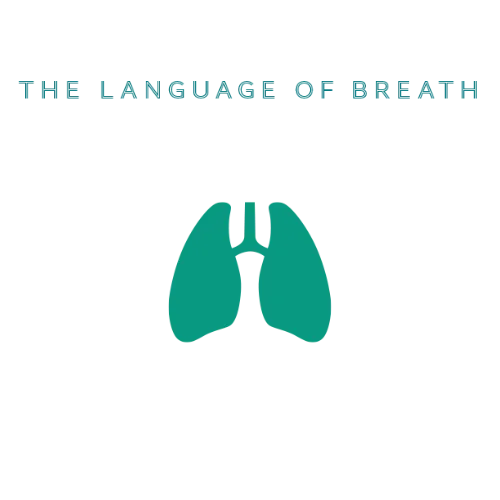The Language of Breath Book
Bonus Materials


As a thank you for buying The Language of Breath please enjoy these extra materials. Check back often as we will update this page regularly.
Guided Sessions
The sessions below are four selections from 'The Language of Breath' book. If you would like to dive into the Language of Breath Online Course, you can find more information below.
Important Health Contraindications
Epilepsy: Superventilation should be avoided by those who suffer from epilepsy. The low levels of CO2 in the blood can cause a condition called hypocalcemia. This is a brief state of low calcium in the blood that can lead to a seizure.
Uncontrolled high blood pressure: Superventilation can induce a strong temporary stressed state. This, combined with low CO2 in the blood, can lead to constriction of blood vessels and a temporary increase in blood pressure that can be dangerous if you already have high blood pressure. See your health care practitioner to find out more about your blood pressure and whether superventilation is right for you.
Recent heart attack or stroke: Since vasoconstriction can occur when practicing superventilation, check with your doctor to ensure you have recovered enough to practice superventilation.
Pregnancy and nursing: Because superventilation can induce a temporary stressed state, it is important to avoid doing this style of breathwork while pregnant or nursing. Heightened levels of stress may impact your baby, so it is best to be on the safe side and wait until you are no longer pregnant or nursing.
Asthma: While the Language of Breath protocols will mitigate this risk factor significantly because we will only breathe through the nose to a balanced cadence, it is still a good idea to keep your inhaler handy. In cases of dry air or air with dust or pollen floating around, increased airflow can lead to inflammation of the upper airways.
Psychiatric conditions: Individuals who suffer from bipolar disorder, schizophrenia, personality disorders, or any dramatic breathwork requiring hospitalization should only use this style of breathwork in the presence of a highly qualified breathworker and under the supervision of a therapist.
Dive Into the Language of Breath
Learn how to create a positive relationship with your unconscious self, leading to more confidence, better health, and more energy and focus in all areas of your life. Through six, week-long modules, you will learn how to decipher your inner language and how to take an active role in it!

A Theoretical Framework For The Listening Exercise
It could be said that all Language of Breath breathwork is a variation of The Awareness Exercise. The Listening Exercise applies metered, nasal, circular breathing to prolonged interoceptive awareness. The goal is to enhance the already existing profound effect of sustained interoceptive awareness on emotional processing and emotional connectedness. The experience of the practitioner may vary. There is no prescribed outcome; however, in most cases practitioners report experiencing moments of clarity about things that seemed clouded before the session, waking dream states that lead to personal insights, a sense of connectedness with their emotions, and a greater sense of connectedness to the outside world. Perhaps most importantly, practitioners report being able to use the insights gained during their experience in taking actions to improve their lives. The following are the theorized components that are believed to be working together synergistically in The Listening Exercise to produce such a profound experience. This theoretical framework will be updated as new information becomes available.
Sustained Interoceptive Awareness
Dr. Cynthia Price is one of the world’s foremost figures in formal research in this field and has compiled decades of peer reviewed research finding the practice of regular sustained interoceptive awareness to be an effective method of therapy. In her paper, Facilitating Adaptive Emotion Processing and Somatic Reappraisal via Sustained Mindful Interoceptive Attention (2021), she states, “This process brings subjective awareness to notice inner body experience (or interoceptive awareness) that is often outside of conscious awareness, so that it may be understood and re-integrated in more adaptive ways, which we call somatic reappraisal.” She is the founder of the Center for Mindful Body Awareness and offers training in Mindfulness in Body-Oriented Therapy, a practice that teaches practitioners to develop the skill of interoceptive awareness to facilitate trauma release, emotional connectedness, and self-care.
The work of Dr. Price has been foundational in The Language of Breath Philosophy of Breathwork and Self-Awareness. For a complete list of research conducted by Dr. Price, visit The Center for Mindful Body Awareness at: https://www.cmbaware.org/publications/
Metered Nasal Circular Breathing
The Listening Exercise utilizes metered nasal circular breathing at a pace of 3,0,3,0 (10 breaths per minute) with the goal of lowering CO2 levels in the blood slowly without ramping up the autonomic nervous system to an extreme sympathetic level. This alleviates CO2 related distress and creates a mild blissful state as a backdrop for the practitioner’s sustained interoceptive awareness which may facilitate a positive somatic reappraisal of whatever comes up during the session.
Why metered nasal circular breathing?
In many integrative breathwork styles, the use of circular breathing is done via the mouth and in an uncontrolled manner, leaving practitioners to breathe at their own pace. For many, this seems liberating and allows practitioners to curate their own experience. However, The Listening Exercise is focused on enhancing the integrative potential of sustained interoception without an extreme activation of the autonomic nervous system. The primary focus of the practitioner, for this practice, is a sustained awareness of internal sensations rather than a focus on breathing. The use of metered circular breathing allows the pracitioner to let the breathing be automatic and in the background while focusing on internal awareness.
Enter your details to subscribe to The Collective Wisdom newsletter.
Secure Shopping with 100% Industry Standard SSL
©2025 Midwestern Method LLC. All Rights Reserved. | Privacy Policy | Terms & Conditions
